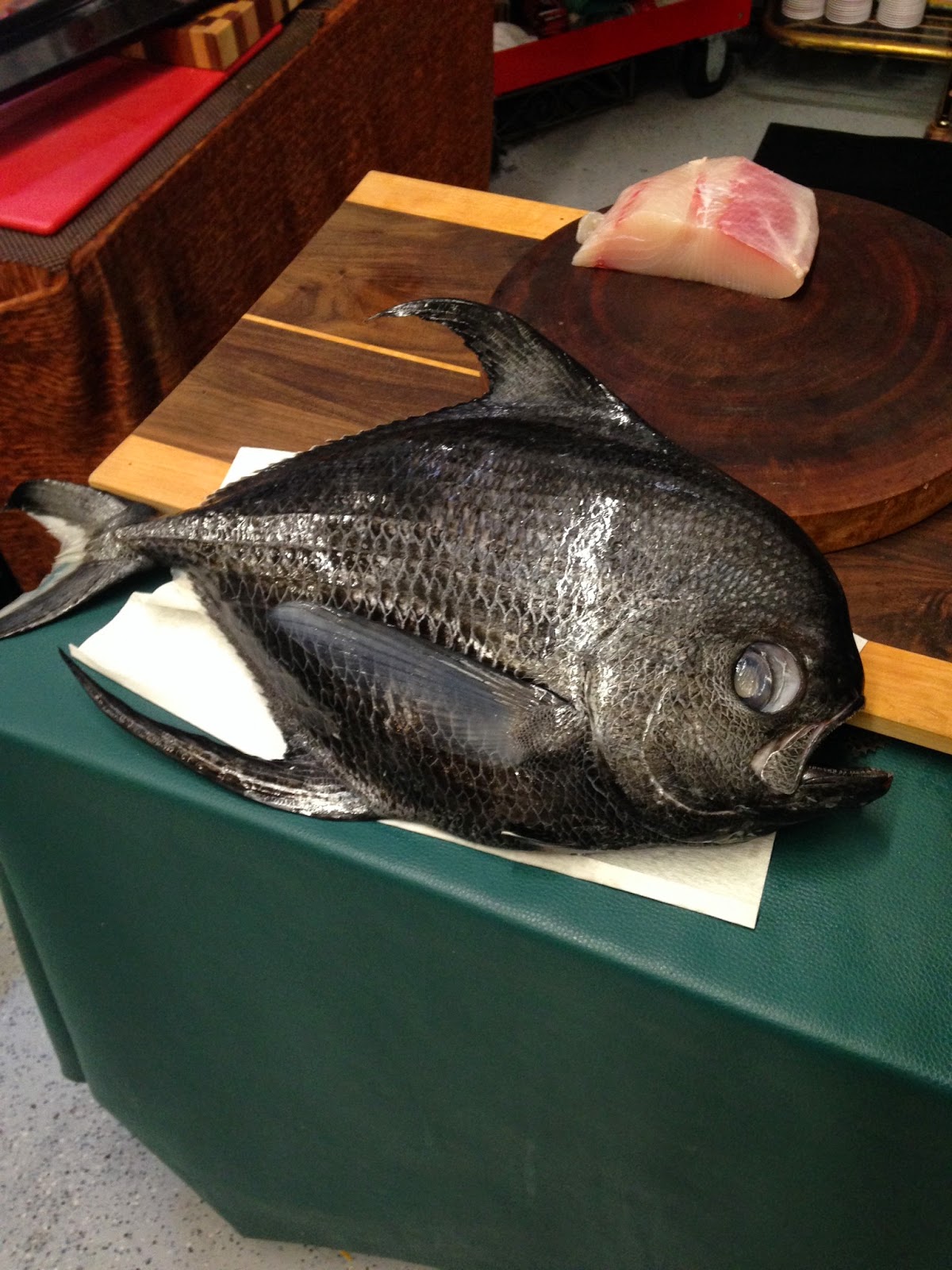Taking a Virtual Trip to the Islands with Monchong
Every once in a while I'll get a message from Tommy Gomes of Catalina Offshore Products that reads something like this: If you have time, come by the shop this afternoon, I got a piece of fish that will knock your socks off!
 |
| Photo by Rebecca Gardon |
The fish came in recently with a catch of big eye tuna--another fish we'll talk about soon. This particular shipment is gone, but Tommy assures me that more will be coming in. He had one last half-pound piece that he gave me, slicing off a filet to saute for me at the warehouse so I could get a taste of what I was in for. His minimalist approach gave me the full flavor of the fish--all he did was put some oil in the skillet then add salt, lemon juice, black balsamic vinegar, and the Salt Farm 73, a smoky custom salt for Catalina Offshore Products made by Salt Farm.
Back home I sliced 3/4-inch pieces, slathered on some olive oil, and added lemon juice and seven-spice shichimi togarashi seasoning. Then I put it on my stovetop grill. It took about three minutes or so to cook.
The flavor of the Monchong is sweet and rich. Once cooked it has a white flaky flesh that seems impossible to overcook--a forgiving fish, not unlike black cod only not as oily. And, like black cod, I envision marinating Monchong in a mixture of miso and rice vinegar to broil in my next go-round.
Since I couldn't eat it all at one meal, I've saved a couple of slices to add to a salad or perhaps cut up and use for fish tacos.
Print Page















No comments:
Post a Comment